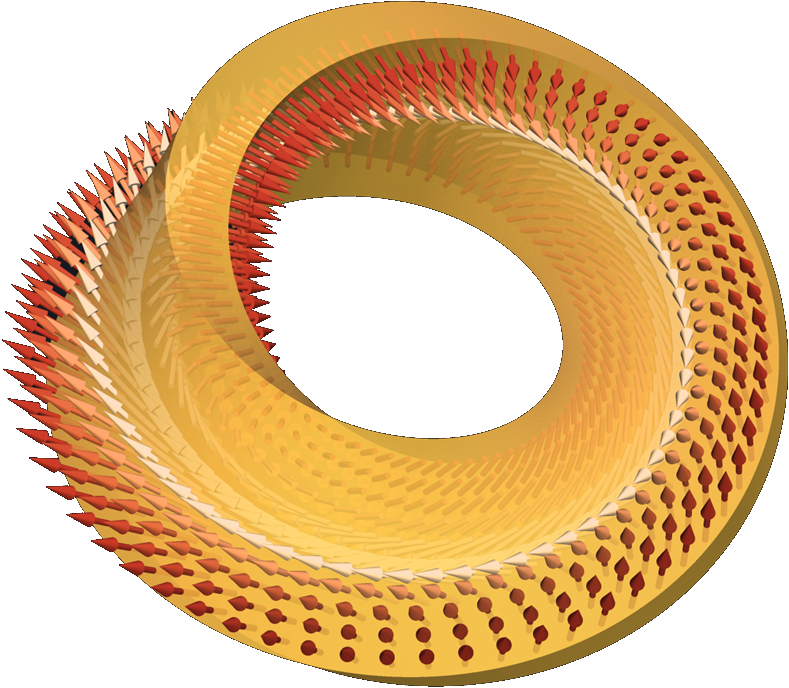Speaker
Description
Magnonic crystals are the artificial periodic structures which can be produced by spatial variations of magnetic parameters such as saturation magnetization, exchange constant or geometrical parameters [1]. They are promising for the control of magnon currents, all-magnon data processing [2] and for logic gates realization [3].
In the current study we consider ferromagnetic wave-shaped nanowire with strong easy-tangential anisotropy and propose new mechanism of magnonic crystal formation due to the periodic curvature. The ground state of magnetization and spin-wave spectrum of this structure can be described using recently developed approach [4] for arbitrary shaped wires. Curvature effects result in two geometry-driven effective interactions: the Dzyaloshinskii-Moriya one and additional anisotropy. These interactions lead to the deviation of magnetization from tangential distribution. Analytically and numerically we calculate the ground state of magnetization in a wide range of curvatures.
The periodic structure of the magnetization ground state plays a role of periodic potential for magnon excitations. The spin-wave band structure is calculated numerically and limit cases of large and small curvatures are solved analytically. With increasing of the curvature, the width of the main gap asymptotically goes to zero by the law $\Delta\Omega_0\propto(\kappa\ell)^{-1}$, with $\kappa$ being the curvature amplitude and $\ell$ being the magnetic length. The widths of the all gaps except the first one decrease with increasing of curvature, the width of the first gap $\Delta\Omega_1$ goes to a constant value $\Delta\Omega_1 \asymp \frac{3}{4}$(in units of frequency of uniform ferromagnetic resonance for straight wire). The latter effect can be of high importance for engineering of magnon waveguides based on the magnetic molecular chains.
[1] S. O. Demokritov and A. N. Slavin (eds.), Magnonics: From Fundamentals to Applications (Topics in Applied Physics), Springer Berlin Heidelberg, Berlin New York (2013)
[2] A. V. Chumak, V. I. Vasyuchka, A. A. Serga, and B. Hillebrands, Nat. Phys., 11, 453 (2015)
[3] T. Schneider, A. A. Serga, B. Leven, B. Hillebrands, R. Stamps, and M. Kostylev, Appl. Phys. Lett.,92, 022505 (2008)
[4] D. D. Sheka, V. P. Kravchuk and Y.Gaididei, J. of Phys. A: Math. and Theor.,48, 125202 (2015)

